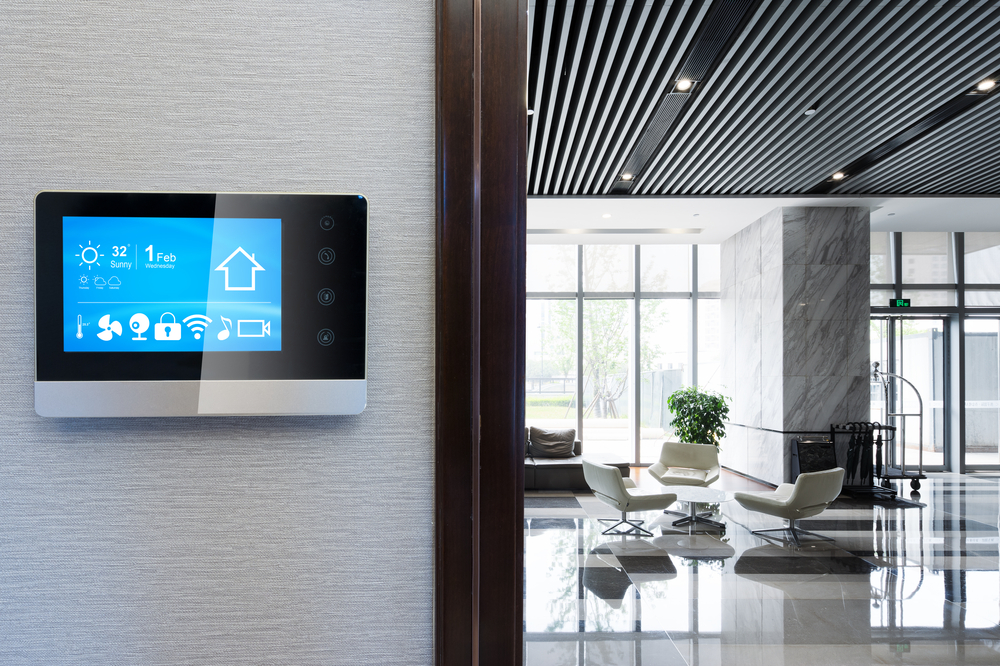What is a Bluetooth mesh network?
How Bluetooth enabled IoT devices are creating automated working environments with seamless integration


A Bluetooth mesh network enables many different devices to be linked together wirelessly inside a building, like an office. Even though Bluetooth technology has existed since around the late 1980s, it has only been since 2017 that users have been able to utilise it as a mesh network.
Similar to all mesh networks of this kind, Bluetooth mesh allows automated 'many-to-many' communication between nodes like machines, sensors or servers. This means that the function of the mesh network can vary depending on the technology being deployed, but a very common use case is to support a smart building's connected systems.
Martin Woolley, technical programme manager for the Bluetooth Special Interest Group (SIG), believes this allows buildings to become self-optimising environments.
"A lot of buildings are not that well integrated," he tells IT Pro. "A mesh networking system allows you to monitor and control your lights and your other systems and have them talking to each other and have sensors in real-time informing those systems what they should and shouldn't be doing."
What is seamless IoT?
In contrast to the residential sector, where homes are controlled through voice commands and are integrated with IoT devices, commercial environments are taking automation further away from human control. This is to the extent that changes go unnoticed.
"It's really simple," Woolley explains. "The sun coming out from behind the cloud can cause the ambient light level in the room to get brighter, so the system turns the lights down, very subtly, in real-time and people don't even realise what's going on.
"[This creates] this nice working environment where all the lighting is at just the right level for people to be comfortable and it stays like that throughout the day. Even when it is getting darker or it's getting brighter, the sensors in real-time are talking to the lighting controllers that act inside the lights talking directly to them."
Get the ITPro daily newsletter
Sign up today and you will receive a free copy of our Future Focus 2025 report - the leading guidance on AI, cybersecurity and other IT challenges as per 700+ senior executives
What is orchestration?
In this case, lighting would act as only one element of a much larger network, allowing multiple autonomous applications to run simultaneously. Woolley calls it "orchestration" when all the systems of a building change in unison, and as the term suggests, the mesh network only uses one device to communicate with the rest.
"A collection of devices that are all within range of each other in a room, only one of them can use the radio at a time. If two devices transmit at the same time, the packet that they transmit will collide and essentially get corrupted and we lose it."
According to Woolley, the larger the packets the longer it will take to transmit and potentially occupying the radio for longer. If the radio is slow, it could take a while to transmit a packet, increasing the probability of bumping into another device that's trying to transmit.
What are preemptive environments?
Unlike Wi-Fi-connected IoT, where devices like Alexa still call for human input, the Bluetooth version is completely automated. Sensors create an interactive environment that is virtually preemptive.
"You walk into a room and you're the first person in it," Woolley explains. "So an occupancy sensor knows you're there and it tells the network to switch to scene number three, which basically means the lights come on to just the right level, maybe the blinds come down, perhaps the heating comes up a touch.
"Lots of things all happen at once, sort of like telling things to all do something suitable, in unison. It's about automated, self-optimising behaviours with sensors and other things like machine-to-machine based devices, but it's all about how people interact with the building and how the environment is optimised."
Although still in its infancy, many office spaces, retail outlets and hospitals use a Bluetooth wireless mesh network, and 360 million Bluetooth smart building devices are predicted to be shipped by 2022.
Bobby Hellard is ITPro's Reviews Editor and has worked on CloudPro and ChannelPro since 2018. In his time at ITPro, Bobby has covered stories for all the major technology companies, such as Apple, Microsoft, Amazon and Facebook, and regularly attends industry-leading events such as AWS Re:Invent and Google Cloud Next.
Bobby mainly covers hardware reviews, but you will also recognize him as the face of many of our video reviews of laptops and smartphones.
-
 Cleo attack victim list grows as Hertz confirms customer data stolen
Cleo attack victim list grows as Hertz confirms customer data stolenNews Hertz has confirmed it suffered a data breach as a result of the Cleo zero-day vulnerability in late 2024, with the car rental giant warning that customer data was stolen.
By Ross Kelly
-
 Lateral moves in tech: Why leaders should support employee mobility
Lateral moves in tech: Why leaders should support employee mobilityIn-depth Encouraging staff to switch roles can have long-term benefits for skills in the tech sector
By Keri Allan